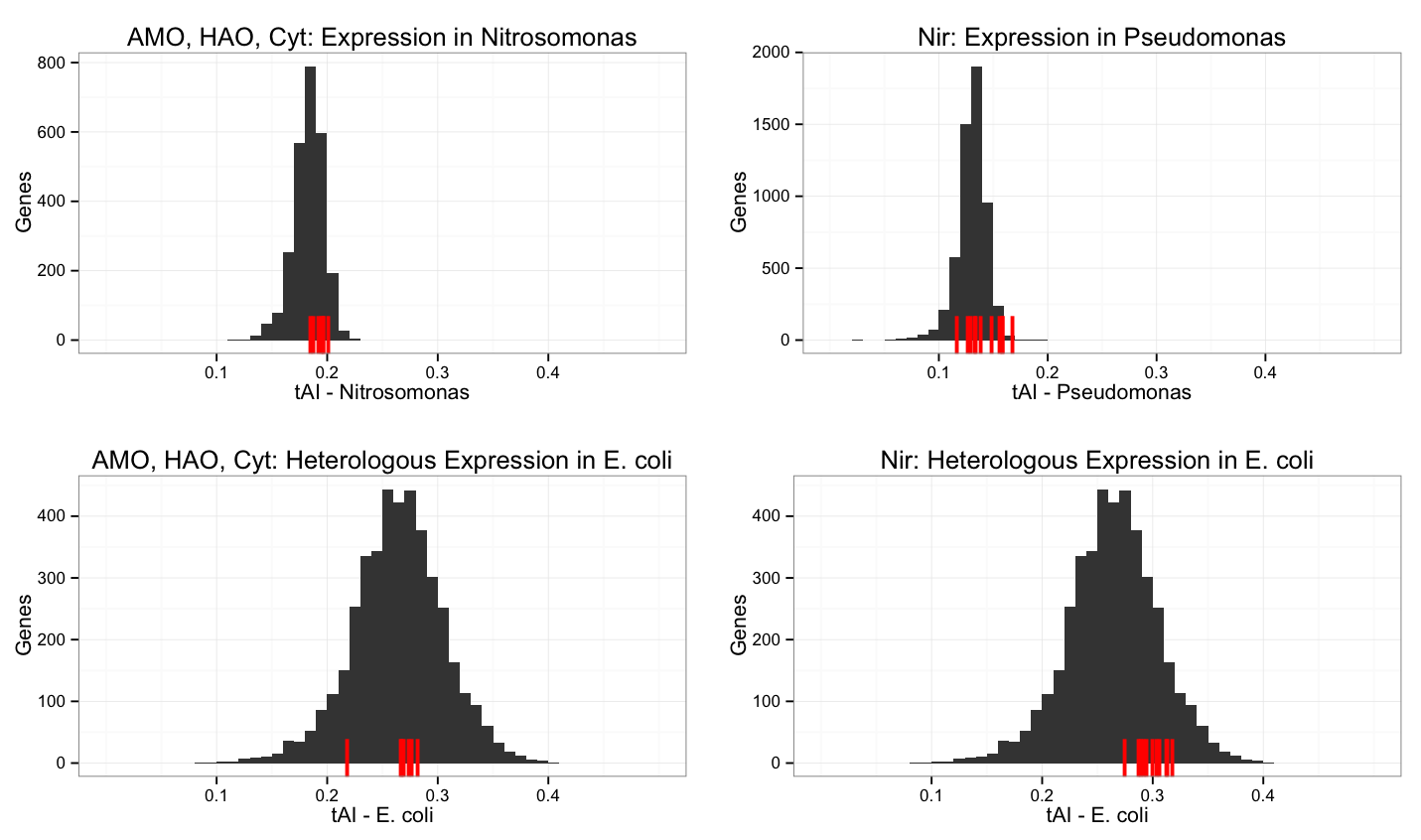Team:DTU-Denmark/Codon Optimization
From 2013.igem.org
| Line 13: | Line 13: | ||
Graphs are shown for genes from ''Nitrosomonas europaea'' (left) and ''Pseudomonas aeruginosa'' (right). The top row shows tAI levels over these organisms, with our genes of interest in red, and the bottom row shows heterologous expression of the same genes of interest in ''E. coli''. The black area shows the distribution of tAI values over all genes in the organism. Click for larger images. | Graphs are shown for genes from ''Nitrosomonas europaea'' (left) and ''Pseudomonas aeruginosa'' (right). The top row shows tAI levels over these organisms, with our genes of interest in red, and the bottom row shows heterologous expression of the same genes of interest in ''E. coli''. The black area shows the distribution of tAI values over all genes in the organism. Click for larger images. | ||
| - | [[File:Dtu codon opt | + | [[File:Dtu codon opt.png|600px]] |
| - | + | ||
| - | + | ||
| - | + | ||
== Conclusions and Discussion == | == Conclusions and Discussion == | ||
Revision as of 12:10, 28 September 2013
Abstract and Methods
The purpose of this work is to determine whether we should codon optimize the genes from Nitrosomonas europaea and Pseudomonas aeruginosa that we are expressing in E. coli. We find that the heterologous expression of these genes is such that we do not need to codon optimize.
E. coli has a different tRNA pool than N. europaea and P. aeruginosa. When genes from these organisms are expressed in E. coli, they may have a very inefficient translation efficiency if the available tRNA pools are different. To determine the impact of this difference, we calculated the tRNA adaptation index (tAI).
Using tRNAscan-SE 1.4, we determined the codon tables for E. coli, N. europaea and P. aeruginosa. Then, we calculated the tAI for each organism using a script provided by Chris Workman (unpublished). Finally, we calculated the tAI of heterologous expression of our genes of interest from N. europaea and P. aeruginosa in E. coli using the same script, but with the E. coli codon table instead of the native codon table. The tAI graphs were plotted using the R package ggplot2.
Results
Graphs are shown for genes from Nitrosomonas europaea (left) and Pseudomonas aeruginosa (right). The top row shows tAI levels over these organisms, with our genes of interest in red, and the bottom row shows heterologous expression of the same genes of interest in E. coli. The black area shows the distribution of tAI values over all genes in the organism. Click for larger images.
Conclusions and Discussion
Without codon optimization, the genes that we are interested in have tAI values close to the mean for E. coli. This is sufficient for our purposes, and codon optimization is not necessary. If we wanted to express these genes at a higher rate, there is room to codon optimize, however, since many of these genes code for membrane proteins, we are concerned about expression at too high a level that will lead to membrane stress in E. coli.
 "
"





